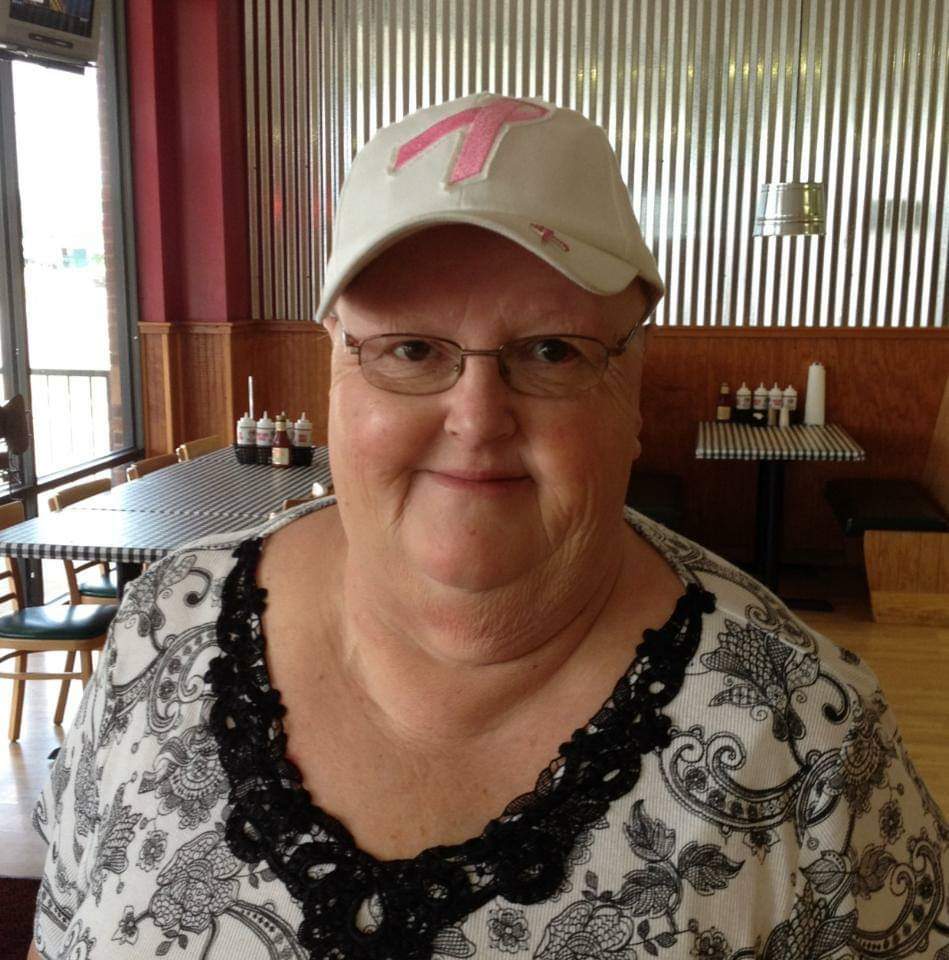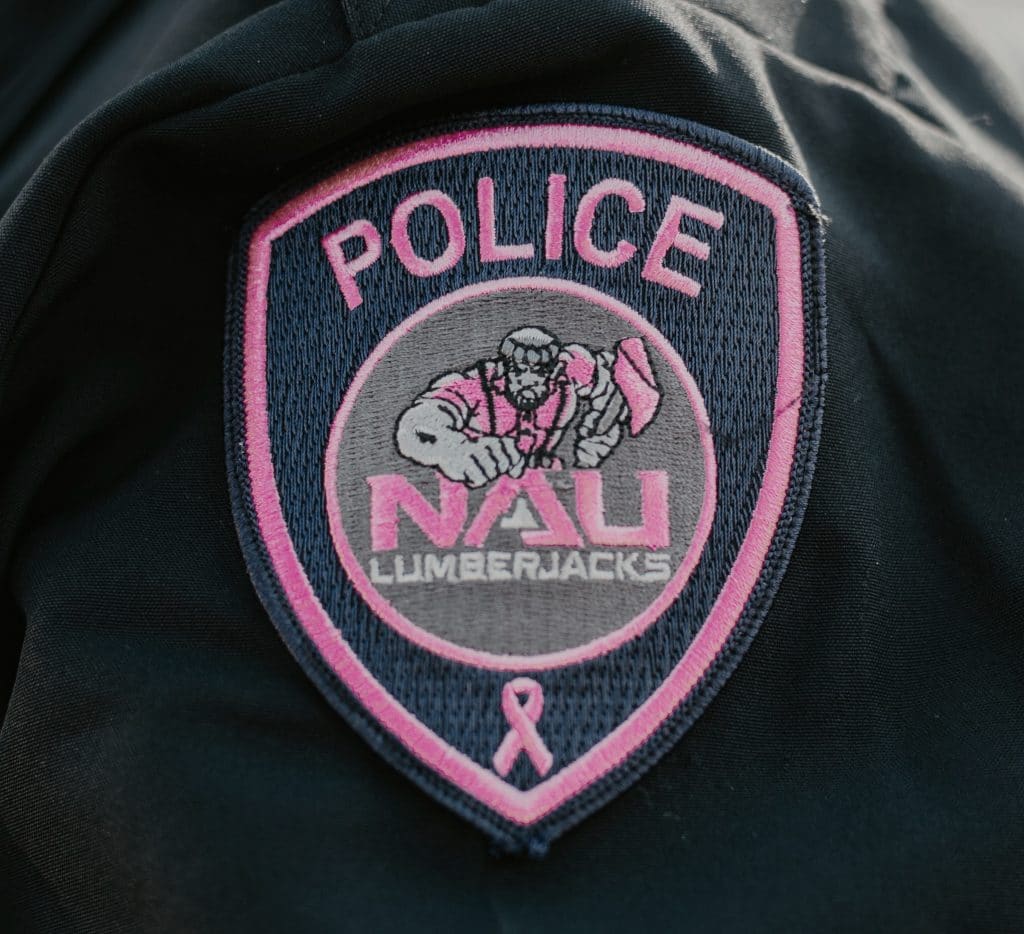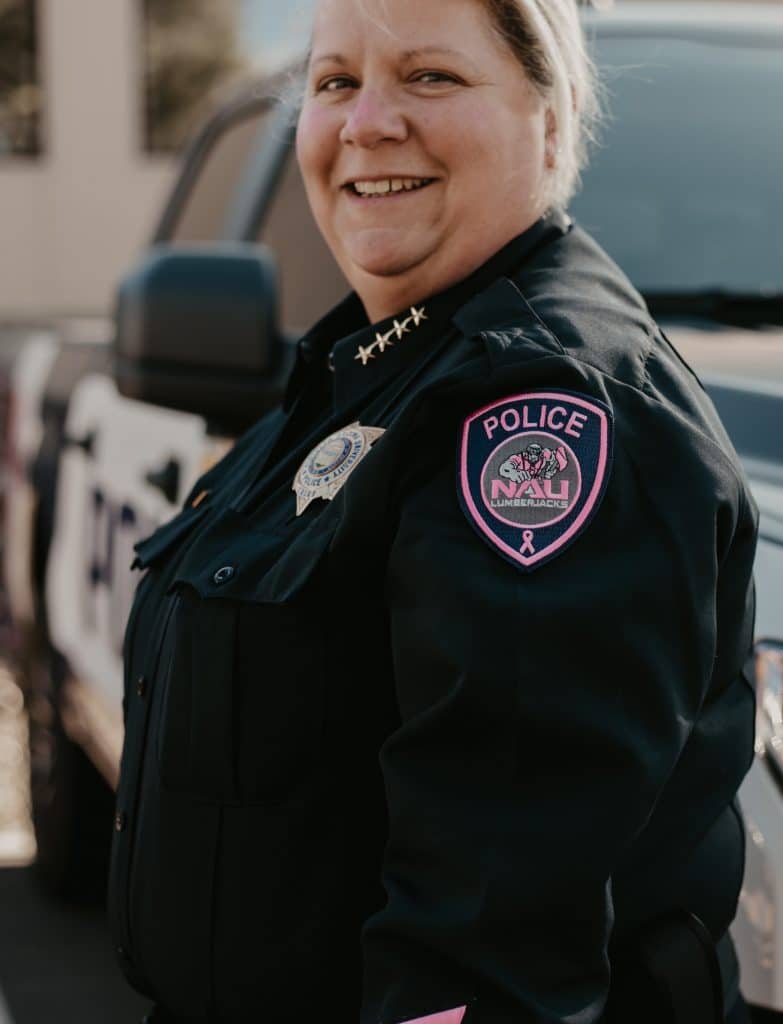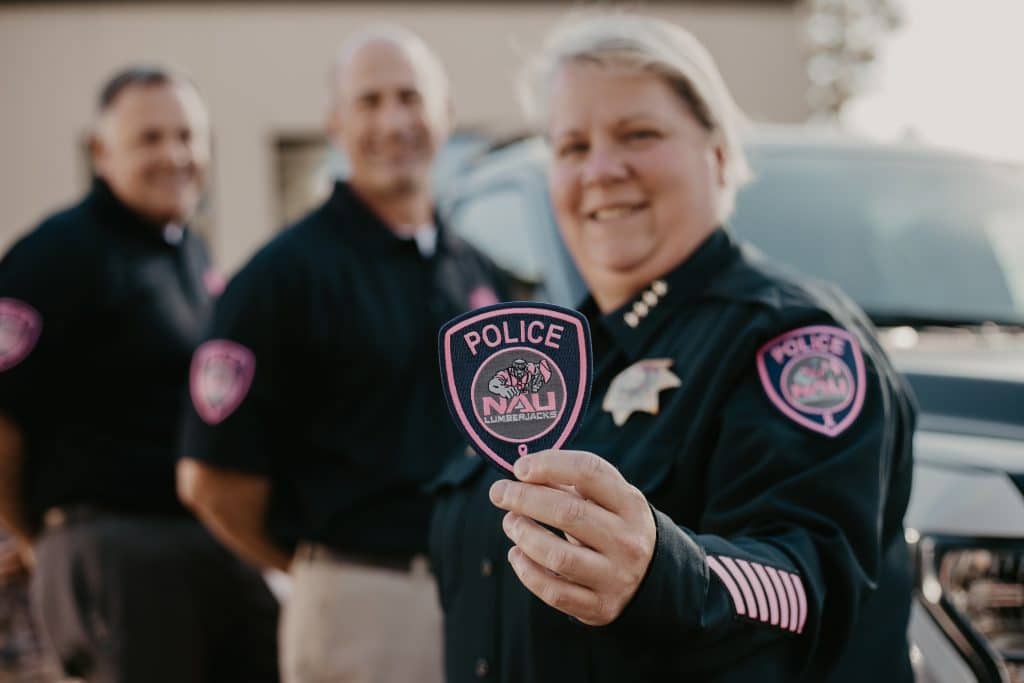Oct. 17, 2019
Just before Matthew Wright and his wife celebrated Valentine’s Day in 2007, Lori found a lump in one of her breasts. As a precaution, they went to the doctor for a biopsy.
“Don’t worry, you are too young to have breast cancer,” the doctor told her.
She was 32—not, as the biopsy later confirmed, too young to have breast cancer.
Kelli Smith was with her sister Jackie when Jackie was diagnosed with breast cancer in the early 1980s. Jackie, too, was told she was “too young.” She was 28 years old.
These are just two of the many breast cancer-related stories that come out of Northern Arizona University’s Police Department. Other than working in law enforcement, they share a common bond of having been directly or indirectly affected by this terrible disease.
One in eight women will develop invasive breast cancer over the course of her lifetime. This year, more than 331,000 new cases of breast cancer are expected to be diagnosed in women in the U.S. October is designated Breast Cancer Awareness Month, a time to raise awareness about the disease and the importance of detecting breast cancer early.
In Lori’s case, early detection and an aggressive treatment plan saved her life—she underwent a double mastectomy, a full year of chemotherapy and multiple surgeries and lived on a diet of pills and medicine that came with debilitating side effects.

“Of course, my wife lost her hair and she chose to shave it off herself prior to the drugs taking all of it,” said Wright, accreditation manager for NAUPD. “She never really said it, but I believe this was one way she could remain in control over the cancer.”
A year later, Lori was declared cancer-free, but she isn’t, and likely never will be, out of the woods. Every six months, she returns to the cancer center for scans and bloodwork—each time triggering a series of sleepless nights and the fear of her cancer coming back. But even still, Lori is one of the lucky ones.

Smith’s sister was not so lucky.
After a single mastectomy and six months of chemotherapy, Jackie survived and thrived for nearly 30 years. In December 2011, the cancer returned in her remaining breast. Despite chemotherapy, radiation and another mastectomy, she died at the age of 58.
“I wish my story stopped there,” said NAUPD Chief Smith. “But it doesn’t.”
In 1992, her mother was diagnosed with breast cancer. And in 2016, her other sister Laurie was diagnosed. Both are still fighting, but a cancer-free future remains uncertain.
“The financial impacts of my mom and two sisters fighting this dreaded disease were astounding, but the emotional impact goes beyond words,” Smith said.
She believes awareness and research are key to finding a cure and one day preventing other families from living her nightmare.
Determined to capitalize on the police community’s shared misfortunes, Smith suggested her department participate in the Pink Patch Project—a campaign designed to engage community members and raise awareness about the importance of early breast cancer detection and treatment by wearing custom pink patches on their uniforms during the month of October.
What started with a few police agencies in 2013 has grown to include several hundred partner agencies throughout the world, all working together to raise awareness and money for cancer research.
“I have an amazing team here at NAUPD. People who genuinely care about others and want to make a difference,” Smith said. “When the pink patch discussion took place in the fall of 2018, the officers and civilian staff personally donated the money to fund the purchase of the pink patches so that no state funds were used to buy them.”

And so, the NAUPD Pink Patch was born.
“We will be forever grateful to the family, friends, coworkers and so many other supporters that helped us get through our tough time—this fight can be unbearable without it,” Wright said. “This is why I take part in the Pink Patch Campaign. We want to show victims, survivors, affected family and friends that NAUPD cares.”
Officers not only wear the pink patches throughout the month, they sell the patches for $10 each and donate the money to cancer research.
“Last year, we raised more than $1,000 for the City of Hope clinical research center, and this year, we hope to raise at least $2,000,” Smith said.

Due to the overwhelming support and positive feedback on social media from the NAU and Flagstaff communities, NAUPD plans to introduce a new pink patch design for October 2020.
Wright and Smith would like to remind readers of the importance of self-care. Make sure you are conducting regular Breast Self-Examinations (BSE), in addition to getting a mammogram every one to two years. A downloadable BSE PDF can be found online.
NAU’s Office of Employee Assistance and Wellness offers regular Mobile Onsite Mammography (MOM)—a breast cancer screening using digital computer aided detection technology. The next MOM, open to employees and their spouses ages 35 and older, will be 7 a.m. to 4 p.m. Oct. 29 and Oct. 30, in the southeast corner of the Skydome parking lot. To schedule an appointment, call (800) 285-0272 and have your insurance card on hand.
To purchase a pink patch, stop by the NAUPD office at 550 E. Pine Knoll Drive or visit NAUPD’s table in the Skydome concourse at the Homecoming football game. Supplies are limited.

Carly Banks | NAU Communications
(928) 523-5582 | carly.banks@nau.edu



